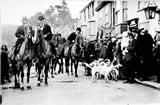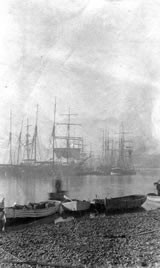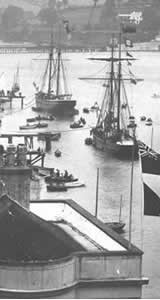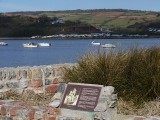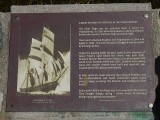Shaldon History
Shaldon’s History
There is little to doubt that a settlement existed between the Ness and Ringmore as long ago as the Domesday Book. Shaldon itself was mentioned in Chancery proceedings during the reign of King James 1.
The original settlement was in Ringmore- the beautiful and sheltered valley, the Saxons built a wooden Church, not the stone built St Nicholas, and the Celtic name of Ringmore means ‘ a great enclosure or clearing’.
Silt has washed down the Estuary over the centuries, causing the river flow to slow down and the estuary to widen, to land has been reclaimed over time, and most of Shaldon has been built on reclaimed land. In the 1800s a retaining wall was built to prevent the water from returning to the silted areas.
Early man would have farmed and fished, and later sailed to far away places, local names provide clues such as nearby Labrador Bay..along the coast.
Trade grew, and shipbuilders plied their trade in Ringmore & Shaldon, the deep-water channel was originally on the Shaldon side, and a flourishing Port was established. When the Shaldon side channel silted up, the channel deepened at Teignmouth, and trade was re established in Teignmouth Docks. It is no mean feat to bring in the large container ships used today over the shifting sands of the bar, to reach the port. The narrow channel is still 30m or so deep, even at low water.
Shipbuilding was very important to village life in Shaldon, there were several early shipyards –Ringmore had two, one located in the area of the King George playing fields and the other above Ringmore Towers-adjacent to the little area jutting into the water, where benches, trees and the sundial are located. Part of the fleet of ships used in the Napoleonic wars was built here. River Teign was also busy with with barge traffic, from both the Clay pits at Newton Abbot and the granite quarries at Haytor. Some Haytor granite is in the British Museum and the National gallery.
Before 1827, the only way across the river to Shaldon was fording at low tide, or a long journey around through Newton Abbot, the first bridge linking Teignmouth and Shaldon was a wooden one in 1827, and at that time was the longest wooden bridge in England. Part collapsed in 1838 after an attack of woodworm !. The structure was changed in 1931 to allow a portion to open, and was last updated and strengthened in the last 10 years.
Many parts of Shaldon and Ringmore are conservation areas, with listed buildings from the seventeenth and even some from the fifteenth century.
Today Shaldon welcomes holiday makers as part of its daily commerce, whilst still retaining its fishing heritage, boat trips and cottage industries thrive, and the village is lucky enough to have a full range of shops, pubs and restaurants. A complete transition from the Schooner and men-of-war building to a pleasure and fishing centre-now accessed by excellent transport links by both road and rail.
A couple of images to the right show the information Plaque on the sea wall just above Shaldon Bridge !! Shaldon & Teignmouth was attacked by the French for a second time in 1690 -this is the last time a part of England was occupied by a Foreign Power.
The plaque is above the slipways of the old Henry Follet’s Yard - where the “Avery” was built - the ship that circumnavigated the world 1856-1857 with Shaldon Master Mariner John Jellard.

Search Accommodation
Search Shaldon Hotels, Bed & Breakfasts, Guest Houses and Self Catering Accommodation.
Events - Shaldon Village
Select your preferred start date from the calendar to view events.
E-newsletter Signup
Sign up to our E-newsletter for latest events & offers:

